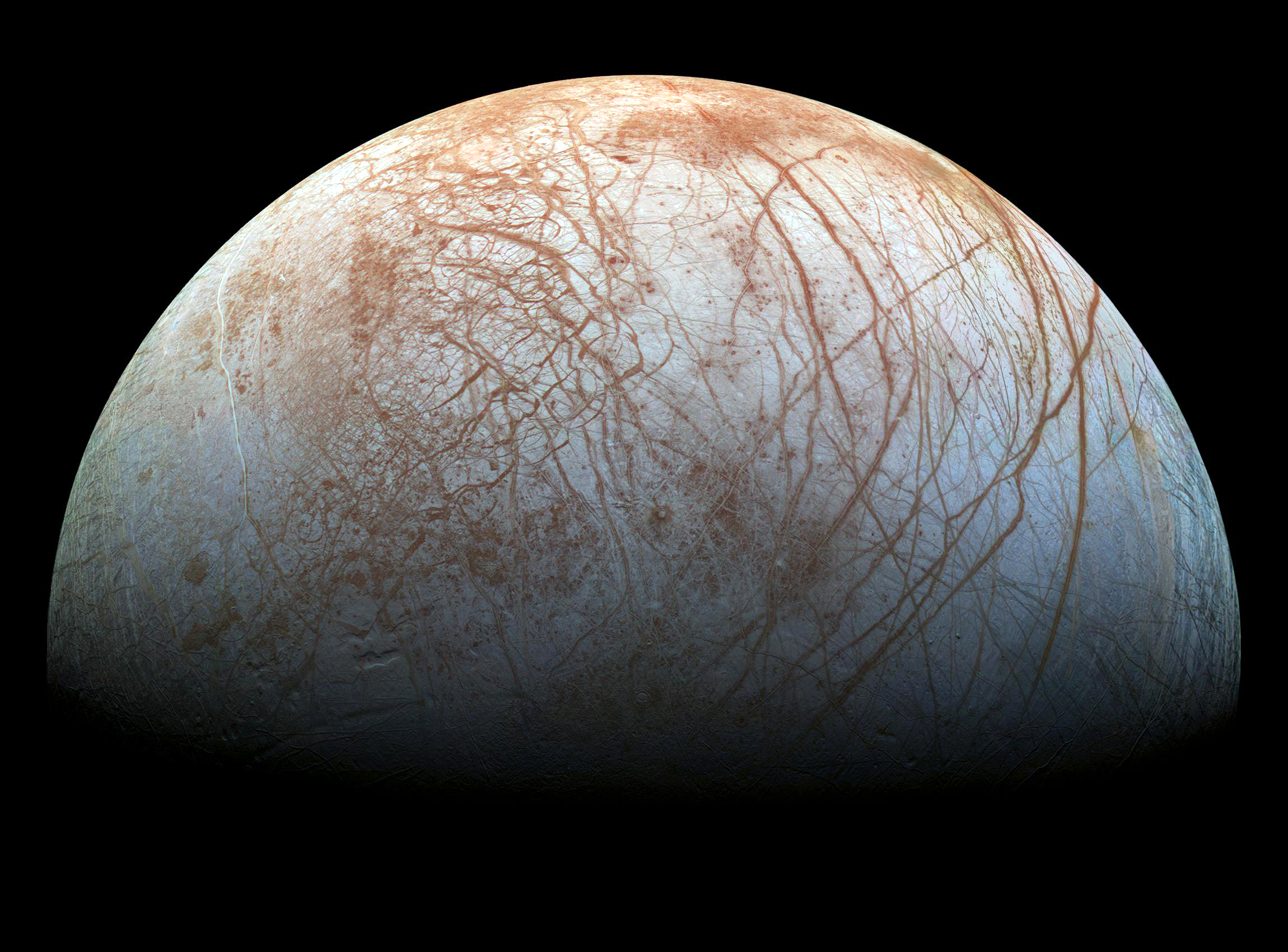I’m a sucker for good astronomical pictures and NASA recently released a stunning new high definition picture of Jupiter’s moon Europa. What’s always surprised me about the solar system is the variety of worlds it contains. Even when bodies are roughly in the same locality like the Jovian moons, it’s as if the slighest change in position or inital composition has the potential to yield wildly different results.
Europa is of particular interest since it is a prime candidate for being amenable hosting life. The liquid ocean lying under its frozen surface might be heated by the volcanic activity resulting from Jupiter’s massive tidal forces. There might be an entire ecosystem thriving in the dark depths of a tiny moon orbiting 600 milion of kilometers away.

I’ve been geeking out a bit about Europa and found a Wikipedia list of the geological features identified on Europa. As was done for our Moon, scientists and geologists have named the various ridges, mountains and regions of Jupiter’s satellite.
I really wonder how they came up with and agreed upon the nomenclature but there are two general themes. The first is names appearing in ancient greek mythology and in particular those related to Europa the character. The other theme is that of celtic mythology: Annwn Regio, Murias Chaos, Amergin Crater… I’d be curious to find out how that came out to be. But it’s a pleasant thought that people in astronomy labs are giving a damn about this and refer to a physical location as ‘Castalia Macula’ rather than just ‘that dark spot up there’.
We’ll have to settle for robots for another while, but I can’t wait for the day a human sets foot on Narbeth Chaos.